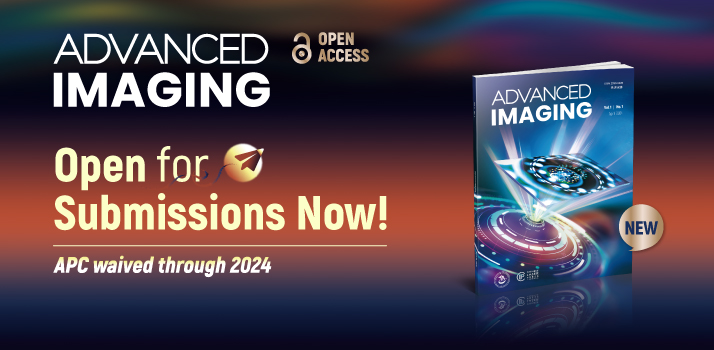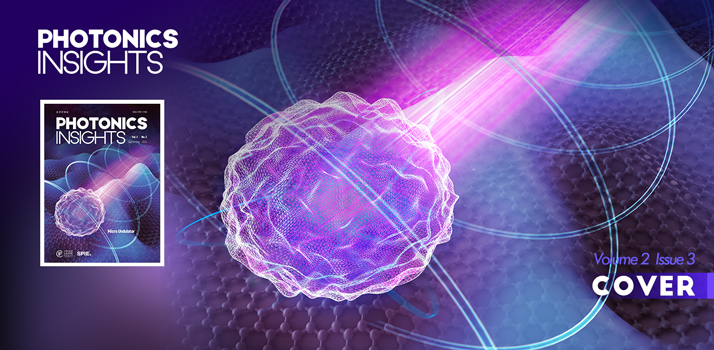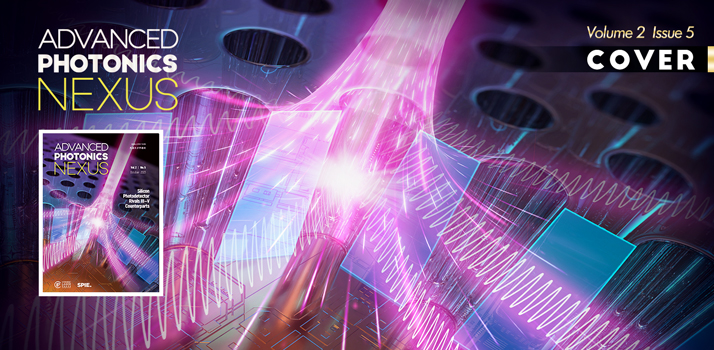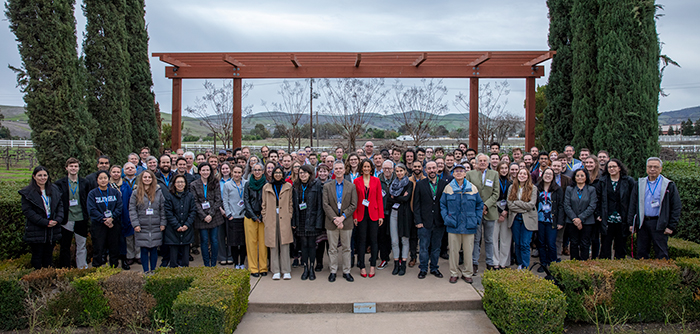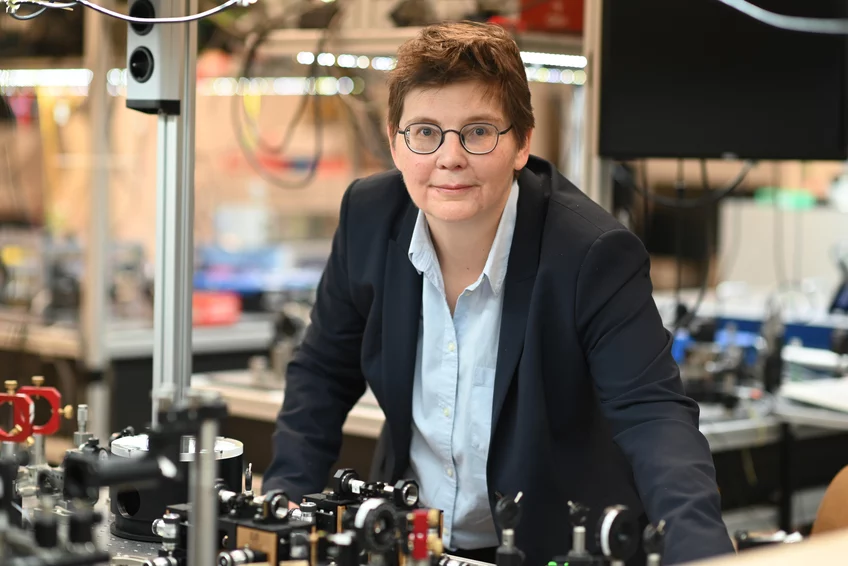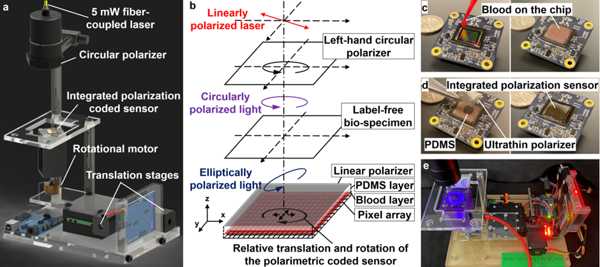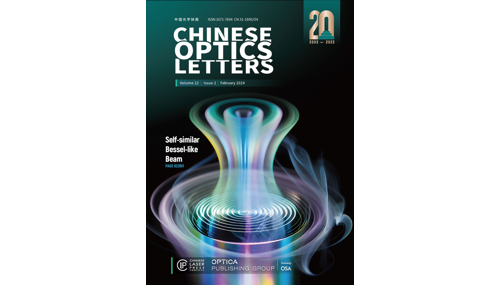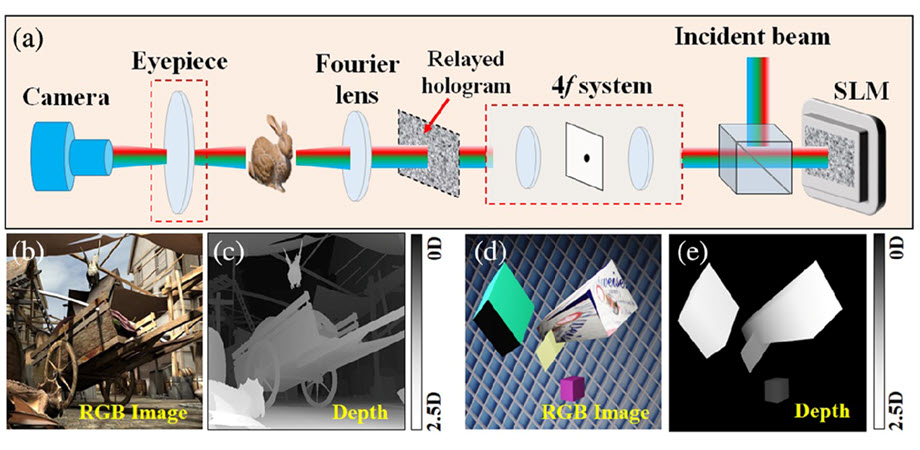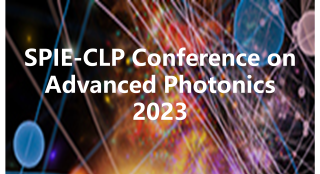- Apr. 11, 2024
- Vol. , Issue (2024)
- Apr. 11, 2024
- Vol. , Issue (2024)
- Apr. 11, 2024
- Vol. 11, Issue 12 (2024)
- Apr. 10, 2024
- Vol. 22, Issue 2 (2024)
- Apr. 09, 2024
- Vol. 3, Issue 3 (2024)
Orbital-angular-momentum (OAM) multiplexing technology offers a significant dimension to enlarge communication capacity in free-space optical links. The c
Orbital-angular-momentum (OAM) multiplexing technology offers a significant dimension to enlarge communication capacity in free-space optical links. The coherent beam combining (CBC) system can simultaneously realize OAM multiplexing and achieve high-power laser output, providing substantial advantages for long-distance communication. Herein, we present an integrated CBC system for free-space optical links based on OAM multiplexing and demultiplexing technologies for the first time, to the best of our knowledge. A method to achieve flexible OAM multiplexing and efficient demultiplexing based on the CBC system is proposed and demonstrated both theoretically and experimentally. The experimental results exhibit a low bit error rate of 0.47% and a high recognition precision of 98.58% throughout the entire data transmission process. By employing such an ingenious strategy, this work holds promising prospects for enriching ultra-long-distance structured light communication in the future.show less
- Apr.16,2024
- Advanced Photonics Nexus,Vol. 3, Issue 3
- 036003 (2024)
Lidar based on the optical phased array (OPA) and frequency-modulated continuous wave (FMCW) technology stands out in automotive applications due to its a
Lidar based on the optical phased array (OPA) and frequency-modulated continuous wave (FMCW) technology stands out in automotive applications due to its all-solid-state design, high reliability, and remarkable resistance to interference. However, while FMCW coherent detection enhances the interference resistance capabilities, it concurrently results in a significant increase in depth computation, becoming a primary constraint for improving point cloud density in such perception systems. To address this challenge, this study introduces a lidar solution leveraging the flexible scanning characteristics of OPA. The proposed system categorizes target types within the scene based on RGB images. Subsequently, it performs scans with varying angular resolutions depending on the importance of the targets. Experimental results demonstrate that, compared to traditional scanning methods, the target-adaptive method based on semantic segmentation reduces the number of points to about one-quarter while maintaining the resolution of the primary target area. Conversely, with a similar number of points, the proposed approach increases the point cloud density of the primary target area by about four times.show less
- Apr.16,2024
- Photonics Research,Vol. 12, Issue 5
- 904 (2024)
Optical fiber bundles frequently serve as crucial components in flexible miniature endoscopes, transmitting end-to-end images directly for medical and ind
Optical fiber bundles frequently serve as crucial components in flexible miniature endoscopes, transmitting end-to-end images directly for medical and industrial applications. Each core usually acts as a single pixel, and the resolution of the image is limited by the core size and core spacing. We propose a method that exploits the hidden information embedded in the pattern within each core to break the limitation and obtain high-dimensional light field information and more features of the original image including edges, texture, and color. Intra-core patterns are mainly related to the spatial angle of captured light rays and the shape of the core. A convolutional neural network is used to accelerate the extraction of in-core features containing the light field information of the whole scene, achieve the transformation of in-core features to real details, and enhance invisible texture features and image colorization of fiber bundle images.show less
- Apr.16,2024
- Advanced Imaging,Vol. 1, Issue 1
- 011002 (2024)
Laser plasma accelerators (LPAs) enable the generation of intense and short proton bunches on a micrometre scale, thus offering new experimental capabilit
Laser plasma accelerators (LPAs) enable the generation of intense and short proton bunches on a micrometre scale, thus offering new experimental capabilities to research fields such as ultra-high dose rate radiobiology or material analysis. Being spectrally broadband, laser-accelerated proton bunches allow for tailored volumetric dose deposition in a sample via single bunches to excite or probe specific sample properties. The rising number of such experiments indicates a need for diagnostics providing spatially resolved characterization of dose distributions with volumes of approximately 1 cm
- Apr.16,2024
- High Power Laser Science and Engineering,Vol. 12, Issue 2
- 02000e17 (2024)
Determining the trap density in the absorbing layer thin film of perovskite solar cells is a important task, as it exerts a direct influence on the efficiency of the devices. Here, we proposed t
Determining the trap density in the absorbing layer thin film of perovskite solar cells is a important task, as it exerts a direct influence on the efficiency of the devices. Here, we proposed the utilization of time-resolved photoluminescence (TRPL) as a non-destruction method to evaluate trap density. A model has been formulated to investigate carrier recombination and transition processes in perovskite materials, subsequently employed for numerical computations and successfully fitted to TRPL signals. Moreover, a genetic algorithm was implemented to optimize the relevant parameters. Finally, statistical methodologies were applied to obtain the parameters associated with the trap states inherent to the material. This comprehensive approach facilitates the successful determination of trap densities across varying samples, enabling clear differentiation.show less
- Apr.16,2024
- Chinese Optics Letters,Vol. 22, Issue 8
- (2024)
We establish a quantum theory of computational ghost imaging and propose quantum projection imaging where object information can be reconstructed by quantum statistical correlation between a cer
We establish a quantum theory of computational ghost imaging and propose quantum projection imaging where object information can be reconstructed by quantum statistical correlation between a certain photon number of bucket signal and DMD random patterns. The reconstructed image can be negative or positive depending on the chosen photon number. In particular, the vacuum state (zero-number) projection produces a negative image with better visibility and contrast-to-noise ratio. The experimental results of quantum projection imaging agree well with theoretical simulations and show that, under the same measurement condition, vacuum projection imaging is superior to conventional and fast first-photon ghost imaging in low-light illumination.show less
- Apr.16,2024
- Chinese Optics Letters,Vol. 22, Issue 6
- (2024)
A high-performance silicon arrayed-waveguide grating (AWG) with 0.4-nm channel spacing for dense wavelength-division multiplexing (DWDM) systems is designed and realized successfully. The device
A high-performance silicon arrayed-waveguide grating (AWG) with 0.4-nm channel spacing for dense wavelength-division multiplexing (DWDM) systems is designed and realized successfully. The device design involves broadening the arrayed waveguides far beyond the singlemode regime, which minimizes random phase errors and propagation loss without requiring any additional fabrication steps. To further enhance performance, Euler-bends have been incorporated into the arrayed waveguides to reduce the device’s physical footprint and suppress the excitation of higher-modes. Additionally, shallowly-etched transition regions are introduced at the junctions between the free-propagation regions and the arrayed waveguides to minimize mode mismatch losses. As an example, a 32×32 AWG (de)multiplexer with a compact size of 900×2200 μm2 is designed and demonstrated with a narrow channel spacing of 0.4 nm by utilizing 220-nm-thick silicon photonic waveguides. The measured excess loss for the central channel is approximately 0.65 dB, the channel non-uniformity is around 2.5 dB, while the adjacent-channel crosstalk of the central output port is −21.4 dB. To the best knowledge, this AWG (de)multiplexer is the best one among silicon-based implementations currently available, offering both dense channel spacing and a large number of channels.show less
- Apr.16,2024
- Advanced Photonics Nexus
Neurodegenerative diseases, such as Parkinson's and Alzheimer's disease, affect the elderly worldwide and will become more prevalent as the global population ages. Neuroinflammation is a
Neurodegenerative diseases, such as Parkinson's and Alzheimer's disease, affect the elderly worldwide and will become more prevalent as the global population ages. Neuroinflammation is a common characteristic of neurodegenerative diseases. By regulating the phenotypes of microglia, it is possible to suppress neuroinflammation and, in turn, help prevent neurodegenerative diseases. This work reports a non-invasive photonic approach of regulating microglia from over-excited M1/ M2 to the resting M0 phenotype using a special NIR light emitted by the SrGa12O19:Cr3+ phosphor. The absorbance and internal and external quantum efficiencies of the optimal Sr(Ga0.99Cr0.01)12O19 phosphor synthesized at 1400 oC for 8 h using 1%H3BO3+1%AlF3 as flux were 53.9%, 99.2%, and 53.5%; and the output power and energy-conversion efficiency of the LED device packaged using the optimal SrGa12O19:Cr3+ phosphor driven at 20 mA reach unprecedentedly 19.69 mW and 37.58%, respectively. The broadband emission of the NIR LED device covers the absorption peaks of cytochrome c oxidase well; and the NIR light can efficiently promote the proliferation of microglia, produce ATP (Adenosine-triphosphate triphosphate), reverse overexcitation, alleviate and inhibit inflammation, and improve cells survival rate and activity, showing great promising for photomedicine application.show less
- Apr.16,2024
- Advanced Photonics Nexus
- Journal
- 14th Apr,2024
- Journal
- 14th Apr,2024

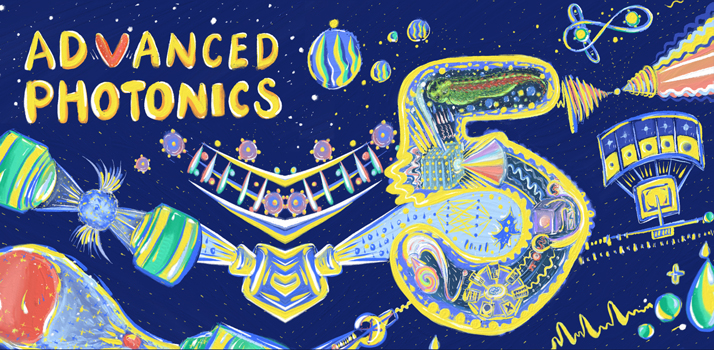
![On the Cover: Terahertz polarization sensing, chirality enhancement, and specific binding based on metasurface sensors for biochemical detection: a review [Invited]](/Post/images/2024/1/img_News_133491772873656281.jpg)
